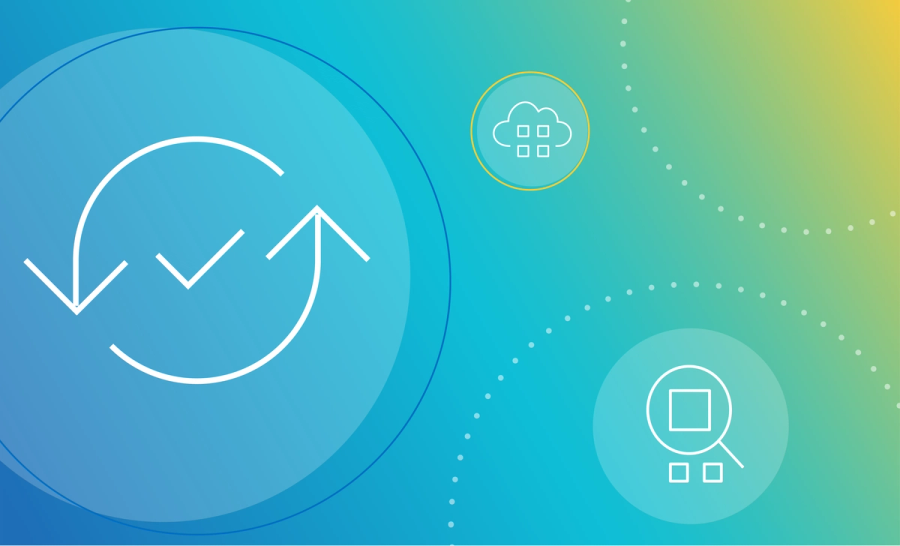Building a data quality culture to drive true business value

The fundamental objective in collecting, analyzing, and deploying data is to make better decisions, observes the McKinsey article on data and decision culture. But simply having huge quantities of data is not enough. Data needs to be right. And easily available to the right people.
While the critical role of data is acknowledged in today’s business landscape, organizations are still uncertain about making data accessible and reliable. Data often resides in silos, and no one can really guarantee its trustworthiness. Dr. Thomas Redman notes that knowledge workers waste up to 50% of time hunting for data, identifying and correcting errors, and seeking confirmatory sources for data they do not trust.
Why is trust in data such an issue? Why is it not ingrained in the organizations? Why is it not a part of their culture? Particularly in data-driven organizations?
A survey tracking the progress of corporate data initiatives indicates that 91.9% of executives cite cultural obstacles as the greatest barrier to becoming data-driven. You will agree that introducing any change in the organizational culture is challenging. Especially when it involves new concepts like data quality and a lifetime commitment to it. What are the hurdles in establishing a data quality culture? What should be the right strategy and plan of action to overcome them?
This blog discusses data quality culture, and how it can build trust in data to drive true business value.
What is data quality?
Data quality is its fitness for use. High data quality ensures that data accurately represents real-world entities and can power reliable insights. Data quality is essential for running operations smoothly, reducing cost and effort wastage, and discovering new opportunities. It is also a key driver of innovation and business agility.
You can measure data quality in various ways, depending on your domain and business context. Several tools are available to measure data quality and identify quality issues.
What is data quality culture and why is it critical?
Data is the lifeblood of modern business. And trusted data is the foundation of good business decisions. Just the way everyone wants to use trusted data, everyone has a role in building trust in data. A good data quality culture indicates that all stakeholders clearly understand what data quality means to their business decisions. They proactively contribute to improve the quality of data and leverage data to drive better business outcomes. Data quality culture also means that every individual in the organization shares the same mindset for reaching the data quality goals.
A well-established data quality culture in your organization ensures:
- Trusted business decisions
- Faster and assured access to relevant data
- Compliant storage and use of data
- Streamlined quality and governance practices
- A shared commitment to data quality
Five steps to build a data quality culture
The following five steps will help you build and sustain a data quality culture.
1. Start at the top and onboard everyone
A well-defined strategy with the top management buy-in helps in establishing the purpose of the data quality culture. It also gives a credible foundation to the initiative in the long term.
When you have support from the top, it becomes easy to onboard everyone in the organization. You typically have data producers and managers in the roles of data engineers, data stewards, and the DataOps team. You also have data consumers that include business users, data scientists, and data analysts. Some of these roles can overlap and have shared responsibilities. Once you explain the need for data culture, you can find enthusiasm building and people volunteering for early tasks. You can also take this opportunity to train and upskill the right people for faster adoption.
If there are any data provocateurs in your organization, this step may be halfway there. Data provocateurs are vocal data citizens who do not stop at the problem but raise concerns across the board. They know something different needs to be done and are not afraid to say so. Data managers and scientists may be the obvious candidates, but anyone in the organization can be a data provocateur. According to Dr. Thomas Redman, data provocateurs are terrific corporate citizens who are great agents of change. They can be the drivers of the data culture.
2. Break down all silos
Over a period, all organizations naturally fall into silos. The silos can be in teams, tools and technologies, data storage, data management practices, and communication. A change in culture begins by making your teams aware of these silos and inviting solutions to break them. It is also essential to recognize and appreciate that data quality is not a one-time activity or one team’s responsibility.
Documenting data quality practices can help your teams understand why they are critical. Everyone can see where things go wrong and how they can prevent the problems. Choose a good platform to break down data silos and speed up unified data access. Tools with collaborative workflows can assist you in addressing data quality issues across the organization. And simplifying communication in your organization helps, too. With regular updates to all, you can build the momentum for creating the data culture.
People, processes, and technology are three pillars of any organizational initiative. If step 1 is about people, step 2 introduces the people to processes and technology.
3. Establish a robust, proactive data quality program
Data by itself cannot define or achieve your organizational objectives. Nor can it find you new business opportunities. You must translate data into insights, first ensuring that your data is fit for use. The old saying, “bad data leads to bad decisions,” is very much true. And those bad decisions can cost you a lot in revenue, customers, compliance, and brand value.
A robust data quality program ensures that your data is continuously monitored and prepared for analysis. It can power flawless operations and generate audit reports for sustained compliance. It also helps improve customer experience and create new products to fuel top-line growth.
A predictive, self-service data quality solution can power proactive monitoring at scale, even for diverse sources and frequent migrations across storage systems. You can also check the 10 Tips on how to improve data quality and accelerate time to value for making your data quality program a success.
4. Enable self-service data quality and operationalize governance
Self-service is the trend here to stay. From data to analytics, self-service empowers business users to use relevant data quickly and perform their tasks efficiently. They no longer depend on IT or technical users to access the right data. Cutting out this step means faster and better decisions leading to business agility.
Enabling self-service data quality puts business users in the driving seat. They can quickly identify issues, assess their business impact, prioritize, and assign them to the right person for action. Operationalizing data governance workflows helps create a shared understanding and trusted delivery of data across your organization.
Self-service data quality with adaptive governance streamlines the time and effort it takes to get to trusted insights. Faster access to trusted data and insights helps make near-real-time decisions, which are essential in the modern business landscape.
5. Measure, communicate, and improve continuously
Steps 3 and 4 focus on technology and processes enabling people to embrace data culture. The fifth and final step brings people, processes, and technology together again. In a different way.
The success of any initiative is not defined if not measured. When you continuously measure your progress, you know where you stand and where you need to put in more effort. As data quality is not limited to a single team, informing all your stakeholders about the status promotes participation. When you frequently communicate issues and actions, you can actively engage everyone for quality improvements.
Continuous improvement is the heart of the data quality culture. You can unlock the value of data only when you measure and improve its quality continuously. And the last key part is about documenting the results continuously. Documenting progress and success gives a sense of achievement and fosters sustained team efforts.
Data quality culture is fully embedded into the organization when all stakeholders understand the what, why, and how of it. A good data quality culture is easy to establish with these five simple steps.
The impact of data quality compounds over time, both negatively and positively, and this is reflected in the value of the company.
A recent IDC survey concluded that the data-leading organizations have a strong enterprise-wide data culture. A strong data culture aims to derive deeper insights from enterprise data by leveraging advanced technology. Collibra Data Intelligence Cloud offers a rich, AI-driven, integrated set of Data Catalog, Data Governance, Data Privacy, Data Lineage, and Data Quality & Observability for true business value.
In this post:
Related articles

Data QualitySeptember 12, 2024
What is data observability and why is it important?

AIJuly 15, 2024
How to observe data quality for better, more reliable AI

Data QualityNovember 8, 2024
Announcing Data Quality & Observability with Pushdown for SAP HANA, HANA Cloud and Datasphere

Data QualityNovember 16, 2023
The data quality rule of 1%: how to size for success
Keep up with the latest from Collibra
I would like to get updates about the latest Collibra content, events and more.
Thanks for signing up
You'll begin receiving educational materials and invitations to network with our community soon.
